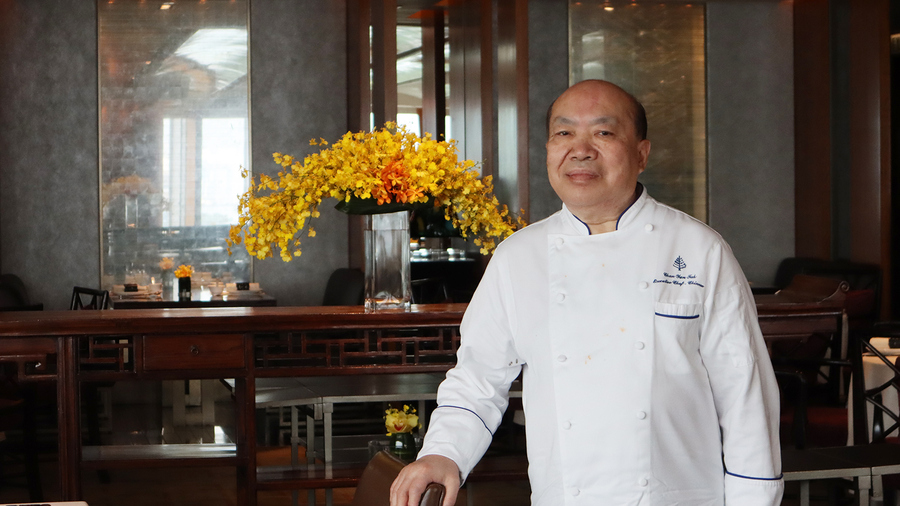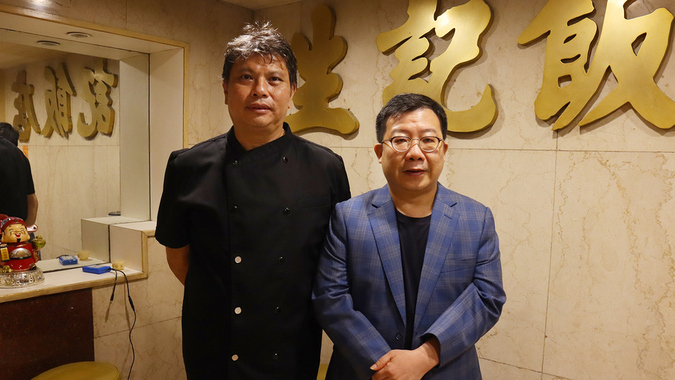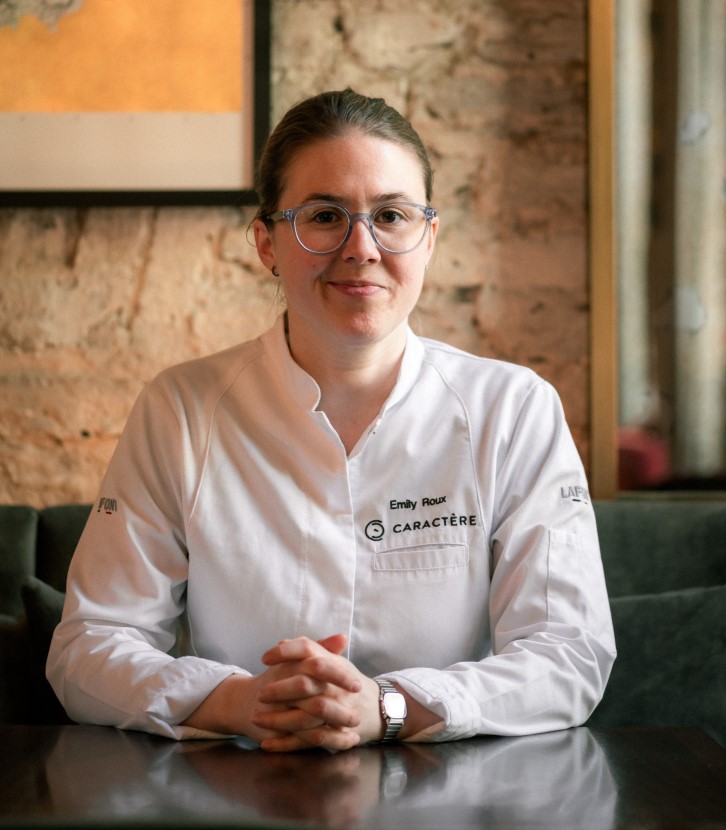“In Chinese food culture, a meal isn’t complete without a bowl of soup,” says Wong Lap Yan, second-generation owner of Bib Gourmand restaurant Sang Kee. Sang Kee’s head chef Luk Wai Kau adds, “But the definitions of soups vary greatly from region to region. Cantonese soups are incredibly sophisticated and the culture is very strong here in Hong Kong.”
Soups, or "tong" in Cantonese, are seen as an elixir. Many believe that it is therapeutic to consume at least a bowl of soup at every meal.

Quick-Boiled Soup VS Slow-Boiled Soup VS Double-Boiled Soup
According to traditional Chinese medicine, foods have their own healing qualities — some are cooling, some are warming, others may be great for the joints, beauty, or organs. Different combinations of these vegetables, herbs, fruits, and usually a source of protein, would be boiled together for a long time to extract these qualities fully and impart them to the soup.There are three main types of Cantonese soups: gwan tong (滾湯 quick-boiled soup), lou fo tong (老火湯 slow-boiled soup), and dan tong (燉湯 double-boiled soup). It takes at least four hours to make double-boiled soups and three for slow-boiled soups. Anything less than three hours is considered a quick-boiled soup.
For slow-boiled soups and quick-boiled soups, ingredients are boiled in the water directly; whereas for double-boiled soup, the ingredients and water are placed inside a sealed ceramic pot before it is submerged into a bigger pot of boiling water.
Cantonese soups are mostly devoid of any additional condiments. The consommé alone is appreciated for its natural sweetness and umami flavours; whereas the dregs are often discarded. “Double-boiling makes clearer soups and encapsulates the essence of the ingredients; slow-boiled soups are much cloudier and richer in flavour,” says chef Tam Tung of one-MICHELIN-Starred Yat Tung Heen.

It’s All About the Seasons
The types of ingredients used depend largely on the seasons and one’s body conditions.“Some soups are suitable only for a particular season; whereas some are suitable all year long. Chinese yam, dace fish, and rice beans together would be food for removing ‘fire’ in your joints; snow fungus and apricot kernels are known for their moisturising effects,” says Chan Yan Tak of Lung King Heen.
The three-MICHELIN-starred institute offers a different slow-boiled soup daily, in addition to its more premium double-boiled soup offerings.

“These wisdoms have been passed down for generations. I think all the Cantonese chefs would know these by heart.”

Luk of Sang Kee explains the difference needs in different seasons. “Spring is the time to get rid of the extra dampness in the body and moisturise your throat; summer is to ward off the heat in the body; autumn is for adjusting and preparing your body for the winter; winter is for moisturising and absorbing nutrients,” he says. “We don’t put any strong Chinese medicinal herbs in our soups.”
READ MORE: 2022 Year In Review: Top Chefs in Asia On Their 2022 Highlights And Hopes for 2023
“Our soups are made with simple ingredients so that one could appreciate all the flavours from each of them, just like how your mother would make it at home.”

What are the Cantonese Soups to Try This Winter
The chefs offer some tips on making suitable soups for the cold and dry weather.Chef Chan from Lung King Heen introduces earnestly, “Today, I’ve prepared a soup with Asian pears, snow fungus, pumpkins, apricot kernels and chickens. This is very soothing for one’s body especially in autumn and winter.”
It is believed that Asian pears, pumpkins, apricot kernels, and snow fungus could replenish moisture in one’s body; whereas chicken adds natural sweetness to the soup. The chef adds, “Not just any chicken — you need an older chicken that weighs more than 1.5 kilograms for those condensed, rich flavours.”
READ MORE: 5 Restaurant Trends for 2023, According to MICHELIN Restaurant Chefs


Tam says diners could try Yat Tung Heen’s Pork Lung Soup with Fish Maw and Almond. The slow-boiled creamy white soup is said to be filled with collagen and is good for one’s respiratory system and skin. But if a vegetarian option is preferred, Yat Tung Heen also offers a double-boiled Cabbage Soup with Yellow Fungus, Bamboo Pith and Black Mushrooms. (Photo: Yat Tung Heen)
“It’s a laborious dish to make as pork lungs are difficult to clean and cook. That’s why fewer and fewer restaurants are serving them now.”


At Sang Kee, Wong and Luk bring out lists of soups they’ve been serving for the last two years.
During the pandemic, Wong consulted a Chinese doctor to design some soups that would moisturise ones’ throats and lungs, as well as boost immunity. “We hope to contribute a little to the society by cooking these soups for our diners — who are often office workers that don’t have time to make their own soups at home,” says Luk.
“It’s for our staff, too. After a long day at work, who has three hours to boil some soup when they’re home?” Wong chimes in. (Photo: Sang Kee)
A Good Bowl of Soup
Luk adds, “And without boiling it for three to four hours, you can’t taste the fo hau in the soup.”“Fo hau” is a frequent term that the Cantonese use to describe a bowl of soup. Meaning fire and time, literally, it describes an ethereal taste brought by the duration and degree of heat exerted when cooking in the dish.
At Sang Kee, the pot of soup is always cooked by boiling and never simmering. It’s first brought to boil in high heat for the first 30 minutes or so, before turning it down to medium-high heat for another hour. And then, finally, it is boiling at medium-low heat.
“If you simmer the soup at a low heat, even if you give it enough time, the flavours and substances from the ingredients wouldn’t melt and dissolve into water,” says Luk. “That’s why it’s called ‘lou fo’ (old fire) — you need some heat,” Wong continues for Luk.
While different chefs may have different tips for soup-making, they all agree that a good bowl of soup needs a generous amount of ingredients, time, and heat.
“Just because we make lou fo tong at home, doesn’t mean it is easy to make. There are some of the secrets I would only share off record,” laughs Luk. He proudly adds, “We’re very particular about our lou fo tong. You could come try our soups and you could tell there is a difference from what you have had at home.”

This article is written by Maggie Hiufu Wong for MICHELIN Guide Hong Kong Macau.
Hero image provided by Yat Tung Heen.




















